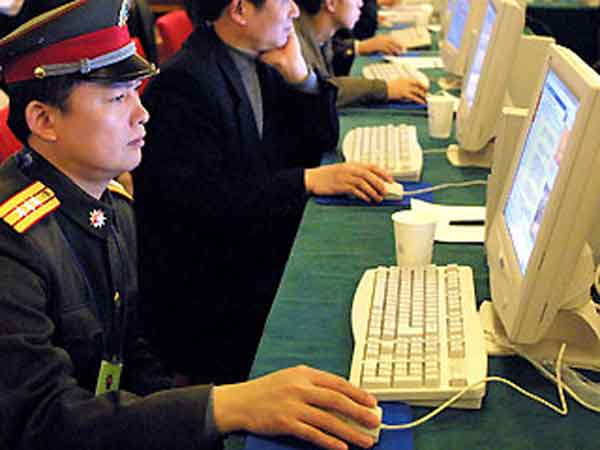Myanmar helped China seize the opportunity to integrate more with Myanmar militarily, politically and economically, Chinese strategists having visualised the long-term need for reaching out to the Indian Ocean, in quest of multiple supply routes to meet future energy requirements. Myanmar itself is rich in natural resources like teak, rubber, gems, coal and copper but more importantly also has proven gas reserves on- and off-shore of roughly 12 trillion cubic feet.
China’s extensive strategic and military cooperation with Myanmar over past two decades includes supply of major weapon systems, providing training, developing the deep-water port at Kyaukpyu and reconnaissance and intelligence systems on the Great Coco Island
China has been developing industries and infrastructure in Myanmar and aims to benefit in a major way by exploring Myanmar’s oil and natural gas reserves. China helped dredge Irrawaddy River to make it negotiable by large vessels, developed strategic roads along the trade route along this river linking Yunnan in China to the Bay of Bengal, and is constructing the 2,380 km oil and gas pipeline from Myanmar’s Arakan Coast to Yunnan. Additionally, a major gas pipeline is under construction from Myanmar’s Shwe oilfield to Yunnan for exploiting an estimated 2.88 to 3.56 trillion cubic feet of natural gas. China wants to route its energy imports from Middle East through a China-Myanmar pipeline bypassing the Straits of Malacca. China is also making major investment in Myanmar’s power sector. Today, bilateral trade between China and Burma exceeds USD 1.4 billion.
China’s extensive strategic and military cooperation with Myanmar over past two decades includes supply of major weapon systems, providing training, developing the deep-water port at Kyaukpyu and reconnaissance and intelligence systems on the Great Coco Island. The Sittwe Port is being modernised as a naval base along with a China funded road, linking Sittwe with Yunnan. Despite all this, China has quietly supported, enlarged and armed her proxies to hold Myanmar to ransom. China’s major proxy in Myanmar is the United State Wa Army (USWA), headquartered in Shan State, dominatingnorth and east Myanmar and is the nerve centre of the drug trade in the famed ‘Golden Triangle’. The Wa tribe owed allegiance to the old Burmese Communist Party and were head hunters akin to our Nagas of Mon District in north Nagaland. China has been arming the USWA over the years but that has intensified in recent years with Myanmar opening up and warming to the west.China had supplied assault rifles, machine guns, anti-tank rockets, QW-1 shoulder fired missiles (reverse engineered from Stinger and Igla), and even armoured vehicles to the USWA. However, recent reportsfrom multiple sources including the Janes Information Group reveal that China has now supplied the USWA with medium helicopters fitted with air-to-air missiles. This will make the USWA perhaps the most potent insurgent organisation in Asia and major clashes between the Myanmar Military and USWA may occur in near future, with the former moving to regain ‘liberated areas’. The fall out of such hostility next door on India’s northeast needs examination.
But the question that we need ask ourselves is that if China despite her political, economic and military engagement with Myanmar is arming the USWA in such major way to destabilize Myanmar and pose a major military challenge to the Myanmar Military, why she will not apply the same policy against India.
But the question that we need ask ourselves is that if China despite her political, economic and military engagement with Myanmar is arming the USWA in such major way to destabilize Myanmar and pose a major military challenge to the Myanmar Military, why she will not apply the same policy against India. Speculation apart, the evidence on ground already points to the same matrix having been applied to India. Take the China-Pakistan collusive support to Indian Maoists and the arms and advice being supplied to them. China has even provided arms manufacturing capability to our Maoists. When ULFA was routed from Bhutan, China provided them sanctuary. ULFA was known to have air defence guns and we should not be surprised if the Maoists one day fire a China supplied missile at an aircraft. China had earlier suppliedshoulder fired air defence missiles to Shia militants in Iraq and later to Taliban. Chinese nationals have been apprehended on mission to contact insurgents in our northeast. China spawned Nepalese Maoists who are already linked to Indian Maoists. The fact is that both China and Pakistan have developed advance capabilities in the sub-conventional sphere and we are lagging way behind. Unless we rectify this strategic asymmetry, we will continue to be on the receiving end faced with benign smiles while the knife in our heart is being twisted. China’s politico-military strategy is totally synchronised and follows Sun Tzu’s dictum, “All Warfare is based on Deception”. Chinese proclamations of peaceful development for a harmoniuous world are not in sync with its manifested military behaviour which is aggressive and hegemonic in its character – both overt and covert. We are not faced with a dragon that spews fire occasionally by force of habit. We are faced with a dragon that has acquired characteristics of the python.






AGREE, THESE TYPE OF SITUATION WILL VERY SOON BREAK iNDIA.